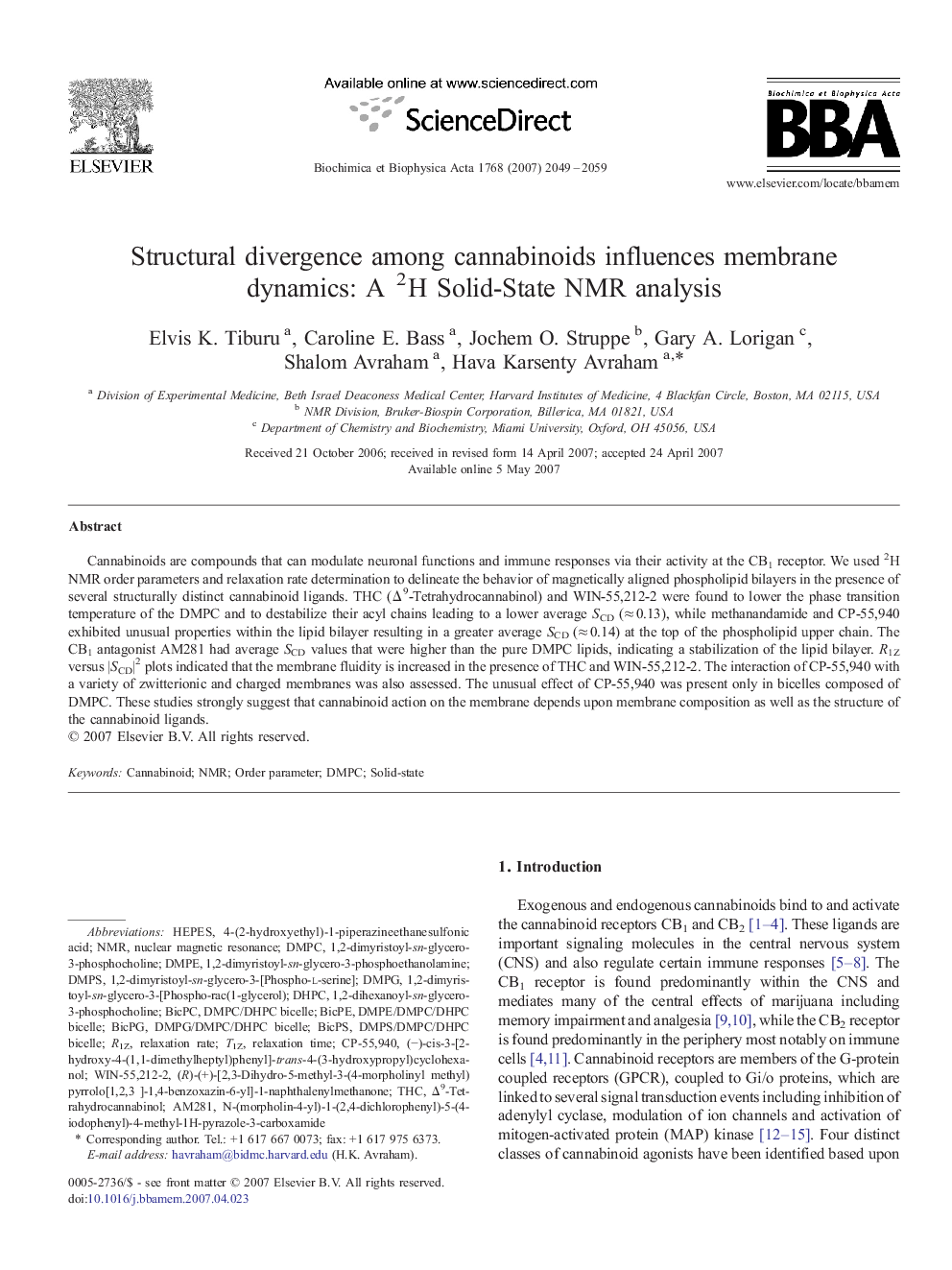| Article ID | Journal | Published Year | Pages | File Type |
|---|---|---|---|---|
| 1945731 | Biochimica et Biophysica Acta (BBA) - Biomembranes | 2007 | 11 Pages |
Cannabinoids are compounds that can modulate neuronal functions and immune responses via their activity at the CB1 receptor. We used 2H NMR order parameters and relaxation rate determination to delineate the behavior of magnetically aligned phospholipid bilayers in the presence of several structurally distinct cannabinoid ligands. THC (Δ9-Tetrahydrocannabinol) and WIN-55,212-2 were found to lower the phase transition temperature of the DMPC and to destabilize their acyl chains leading to a lower average SCD (≈ 0.13), while methanandamide and CP-55,940 exhibited unusual properties within the lipid bilayer resulting in a greater average SCD (≈ 0.14) at the top of the phospholipid upper chain. The CB1 antagonist AM281 had average SCD values that were higher than the pure DMPC lipids, indicating a stabilization of the lipid bilayer. R1Z versus |SCD|2 plots indicated that the membrane fluidity is increased in the presence of THC and WIN-55,212-2. The interaction of CP-55,940 with a variety of zwitterionic and charged membranes was also assessed. The unusual effect of CP-55,940 was present only in bicelles composed of DMPC. These studies strongly suggest that cannabinoid action on the membrane depends upon membrane composition as well as the structure of the cannabinoid ligands.
